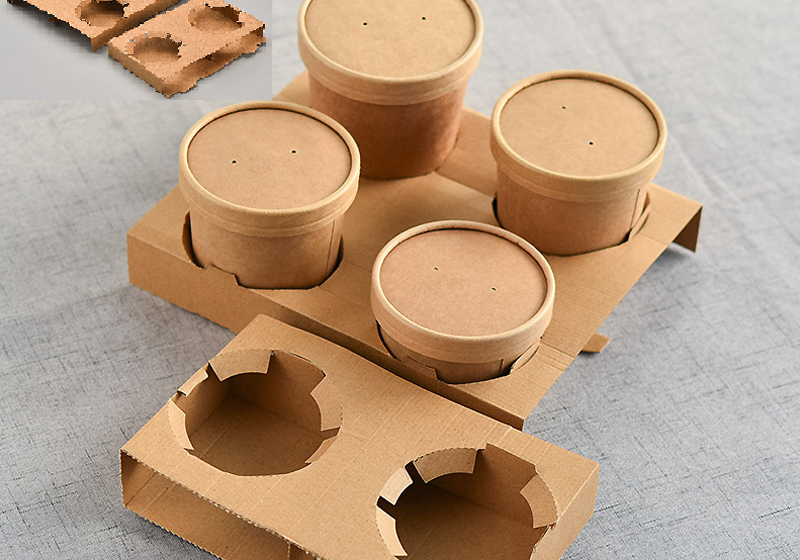1. Sourcing the Raw Materials
The first step in the manufacturing of disposable paper cup trays is sourcing the raw materials. The primary material used in these trays is paper, which can be sourced from various suppliers. Manufacturers often use recycled paper or sustainably sourced paper to create their trays, reducing the environmental impact of production.
Once the paper is sourced, it is processed into sheets that are the appropriate thickness for tray production. The paper is then treated to ensure it has the right balance of strength and flexibility. This step is crucial, as the paper must be durable enough to support the weight of several cups while still being lightweight enough to be disposable.
2. Printing and Coating
Many disposable paper cup trays are printed with branding, logos, or other designs to create a visually appealing product. The printing process typically involves the use of water-based inks, which are more eco-friendly than traditional oil-based inks. Printing is usually done using offset or flexographic printing techniques, which ensure that the design is applied evenly across the surface of the tray.
After printing, the paper may undergo a coating process. Some paper cup trays are coated with a thin layer of wax, plastic, or another material to help make them more water-resistant and durable. This is particularly important for trays that will hold hot or cold beverages, as the coating prevents the paper from becoming soggy or weak.
3. Die-Cutting and Shaping
Once the paper has been printed and coated, it is ready for the die-cutting process. Die-cutting involves using a specialized machine to cut the paper into the shape of the tray. The paper sheets are fed into the die-cutting machine, where they are cut into precise shapes according to the tray design.
During this step, manufacturers can also add perforations, fold lines, and other features that will help form the tray. These elements are critical for ensuring that the tray is easy to assemble and sturdy enough to hold multiple cups.

4. Assembly and Forming
After the paper is die-cut, the tray pieces are folded into shape. Some disposable paper cup trays are designed with interlocking features, allowing the tray to be assembled quickly and securely. The folding process is typically automated, with machines that fold the tray along the designated lines, creating compartments to hold the cups.
At this stage, the tray is fully assembled, and quality control checks are conducted to ensure that the tray meets the necessary standards for strength, stability, and appearance. Any defective trays are removed from the production line before the final product is packaged.
5. Packaging and Distribution
The final step in the manufacturing process is packaging the disposable paper cup trays for distribution. The trays are usually stacked neatly and packaged in bulk, ready for shipment to businesses such as coffee shops, restaurants, and event organizers. Many manufacturers offer custom packaging options for businesses that wish to brand their trays or package them in smaller quantities.
Once packaged, the trays are sent to distribution centers, where they are then delivered to retailers and businesses around the world.










 English
English русский
русский Español
Español 中文简体
中文简体











